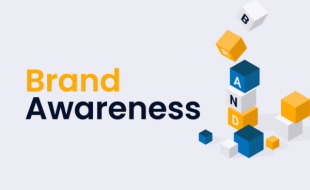Table Of Contents
- The Crucial Role of Language Accuracy in Medical Research
- Ensuring Reliable Data Interpretation
- Reducing the Risk of Miscommunication
- Facilitating International Collaboration
- How Language Accuracy Protects Patient Safety
- Preventing Medical Errors through Clear Communication
- Supporting Informed Consent and Patient Understanding
- Safeguarding Patient Records and Documentation
- Consequences of Inaccurate Language in Healthcare Settings
- Misdiagnosis and Treatment Complications
- Legal and Ethical Implications
- Conclusion
How Language Accuracy Impacts Medical Research and Patient Safety
In medical research and healthcare, precision in language is essential. Even minor misinterpretations of terminology can lead to flawed data, incorrect treatments, and compromised patient safety. Clear, accurate communication ensures that research findings are properly understood and applied, directly influencing patient outcomes.
Miscommunication can have life-threatening consequences. Every word matters when it comes to patient care, and maintaining language accuracy helps prevent errors, supports informed decision-making, and strengthens the integrity of medical science.
The Crucial Role of Language Accuracy in Medical Research
In medical research, language accuracy is not just a formality; it’s a necessity. Precise language ensures that research findings are clear, collaboration is seamless, and patient safety is prioritized. This section explores these vital elements in more detail.
Ensuring Reliable Data Interpretation
Accurate language is essential for interpreting data reliably. When researchers communicate their findings, any ambiguity in the language used can lead to misunderstandings. This can result in flawed conclusions and negative impacts on further research.
Studies must be described clearly and accurately, without room for varied interpretations. This ensures that data is consistently understood across different teams, reducing errors. Precision in language helps researchers make informed decisions, and fosters trust in research outcomes.
When you’re involved in medical research, it’s crucial to use language that accurately conveys statistical data, methodologies, and findings. This precision helps maintain the integrity of the research process. Avoiding jargon and using agreed-upon terminology can mitigate risks of misinterpretation.
Reducing the Risk of Miscommunication
Miscommunication in medical research can lead to serious consequences. Using precise language helps avoid these issues by ensuring everyone has a consistent understanding of protocols, findings, and implications. Misunderstandings can lead to incorrect application of research findings, which might put patient safety at risk.
Research teams often comprise diverse backgrounds, so using language that’s universally understood is key. Having reliable translation services is beneficial, especially for less common languages. Choosing professionals who specialize in certified medical translation services can ensure that you effectively communicate complex ideas without losing meaning or adding inaccuracies.
The consistency in terminology also aids in training new team members, allowing for smoother transitions and reducing the time needed for orientation. Establishing a common language base across departments is, therefore, crucial in minimizing errors.
Facilitating International Collaboration
International collaboration in medical research is increasingly common. Language accuracy plays a critical role in making these collaborations successful by ensuring clear communication. When researchers from different countries work together, precise language helps in aligning objectives, sharing data, and developing joint publications.
By using clear and consistent terminology, you can avoid cultural or linguistic misunderstandings that hinder progress. Language accuracy fosters trust and builds strong partnerships across borders. Moreover, learning to navigate language differences is invaluable when tackling complex global health challenges.
Language proficiency in a research context also speeds up the development of innovative solutions, as all collaborators can contribute equally and effectively. Ultimately, fostering cohesive international teams enhances the overall quality and scope of research.
How Language Accuracy Protects Patient Safety
Accurate language in healthcare plays a crucial role in minimizing medical errors, supporting informed consent, and safeguarding patient documentation. Each aspect contributes to protecting patient safety and ensuring effective care.
Preventing Medical Errors through Clear Communication
Clear communication among healthcare professionals is a major factor in preventing medical errors. Misunderstandings in verbal or written instructions can lead to incorrect treatments or dosages. For instance, a misplaced decimal point can mean the difference between a safe dose and a potentially life-threatening overdose.
Standardized terminology and protocols help eliminate ambiguity. For example, using the word “unit” instead of “U” for insulin dosage removes the guesswork and enhances understanding. Additionally, implementing guidelines for concise handovers and reports promotes cohesive team interaction and effective decision-making.
Supporting Informed Consent and Patient Understanding
Patients’ ability to understand medical information directly impacts their participation in care decisions. Informed consent can only occur when patients fully understand the proposed procedures and associated risks. Language barriers or complex terminology can hinder comprehension, leading to misinformed consent or refusal of necessary treatment.
Utilizing plain language and visual aids can bridge these gaps. Interpreters and multilingual materials can assist non-native speakers. When patients grasp the information, they are more confident in their decisions, which enhances their engagement in the treatment process and promotes trust in healthcare providers.
Safeguarding Patient Records and Documentation
Patient records must accurately reflect diagnoses, treatments, and outcomes to ensure continuity of care. Language accuracy in documentation is critical for effective communication across departments and facilities. Inconsistent or vague records can result in duplicated tests, overlooked conditions, or conflicting treatments.
Digital records, consistent terminology, and structured formats enhance clarity and accessibility. These features ensure that any healthcare provider accessing a patient’s history can quickly grasp essential details, leading to informed and timely care decisions. Accurate records also serve as a safeguard against legal issues, maintaining both institutional and patient trust.
Consequences of Inaccurate Language in Healthcare Settings
Inaccurate language in healthcare can have severe implications. It can lead to misdiagnoses, treatment errors, legal challenges, and ethical dilemmas that put patient safety at risk. Understanding these impacts is crucial to enhance healthcare delivery.
Misdiagnosis and Treatment Complications
Errors in language can cause serious misdiagnoses. If a healthcare professional misinterprets a patient’s symptoms because of vague descriptions or language barriers, the patient might receive incorrect treatment.
For instance, a simple misunderstanding about a patient’s pain location could lead to a completely wrong diagnosis. This isn’t merely inconvenient—it can worsen a patient’s condition or lead to unnecessary procedures.
Poor communication can also delay crucial treatments. Each missed detail or miscommunicated symptom risks the patient’s health further. You should be aware of these risks and ensure clarity and accuracy in every interaction.
Legal and Ethical Implications
When language errors occur, legal repercussions often follow. Incorrect documentation or miscommunication can lead to malpractice claims. Legal systems don’t take these issues lightly. A single error could easily lead to a lawsuit, severely impacting the healthcare provider and institution.
Ethically, healthcare professionals have a duty to provide accurate care. Miscommunication can violate the trust between patients and providers. It’s essential to recognize that ethical standards demand precise and compassionate communication to maintain trust and uphold patient dignity.
Taking responsibility for language accuracy is not only about avoiding lawsuits but also about committing to ethical patient care standards.
Conclusion
Language accuracy is far more than a technical detail in healthcare and research—it’s a foundational pillar that upholds patient safety, scientific integrity, and global collaboration. From reducing the risk of medical errors to enabling clear international partnerships, precise communication ensures that vital information is conveyed without distortion. As the healthcare and research landscapes continue to evolve, maintaining clarity in language must remain a top priority for professionals committed to delivering safe, effective, and ethical care.














